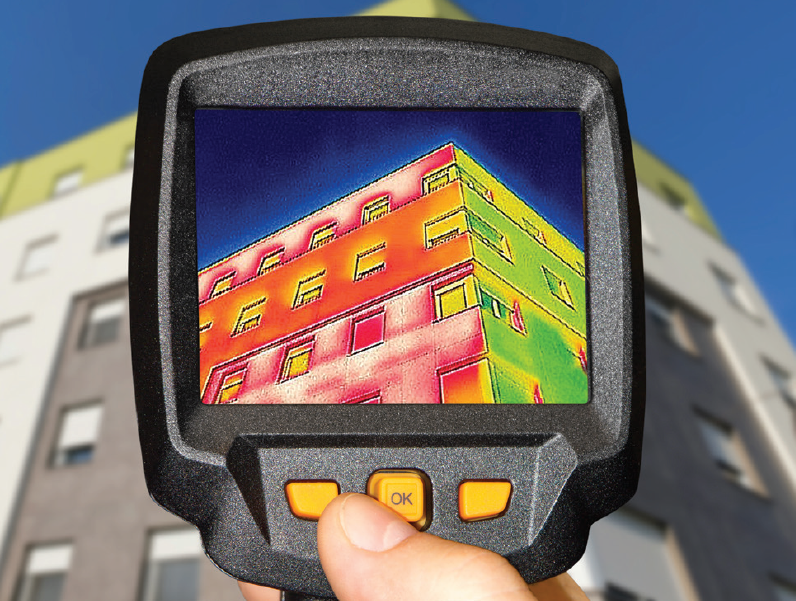Energy costs are a significant expense for almost every business today, which makes energy efficiency investments in your building’s thermal envelope an impactful way to boost your profitability and lower your carbon footprint.
What is your thermal envelope? Simply put, it’s the barrier between the indoor and outdoor environments, including your walls, windows, doors, roof, and foundation. According to the Department of Energy, businesses can save up to 30% on heating and cooling costs by improving their building’s thermal envelope.
VGS is here to help you find economical ways to tighten your building’s envelope to reduce air leakage and heat loss, all so you can spend less money on heating and cooling, and waste less energy.

Infrared cameras allow energy auditors to assess heat loss through a building’s thermal envelope
LOWER ENERGY BILLS
As energy prices rise, using less natural gas has a direct impact on your profitability. Energy efficiency also positively impacts the resale value of your buildings when you go to sell.
IMPROVED COMFORT
Thermal comfort has a significant impact on the satisfaction of a building’s occupants. Keeping your employees, customers, and tenants comfortable is key to their happiness and retention.
LOWER CARBON FOOTPRINT
Addressing climate change is everyone’s responsibility. Your customers will love you for it too. Lease rates for ‘green’ buildings are often higher than average, so it’s also just good business.
AIR SEALING
Reducing the amount of air flowing in and out of your building is a smart and cost-effective way to address your heating and cooling costs and make your indoor environment healthier. Typically, air sealing includes using a variety of materials to address leaks, including spray foam, rigid foam, caulk, flashing, and weather stripping. Air sealing can also help address drafty spaces and humidity issues, the latter of which can lead to mold and air-quality issues.
Air sealing projects usually begin with a blower door test to identify your largest gaps. In addition to air sealing, you may need mechanical ventilation to maintain air quality, which makes it important to work with a qualified professional to address any health and safety issues. Air sealing should be done prior to any insulation work to optimize the performance of your building envelope and avoid potential future issues.
WINDOWS & DOORS
Updating a building’s windows and doors is a popular option, with lots of good reasons to consider it. It’s important to note that the energy efficiency gains offered by new windows and doors do not necessarily justify the expense on their own and typically do not qualify for VGS incentives. However, you might be looking to eliminate lead paint, address
safety issues, eliminate condensation between panes, eliminate rotting frames, or improve aesthetics and functionality, which are all good reasons to upgrade windows and doors.
Some relatively simple and low-cost options for windows and doors can make a real difference. These include installing tight-fitting window shades, closing your curtains at night during the winter to cut down on leaks and radiant heat loss, installing storm windows or inserts, and repairing or installing weather stripping.
ENVELOPE ASSESSMENTS
Improving your building’s thermal envelope can slow heat and moisture flows within your building. It is important to work with a knowledgeable contractor or professional engineer to identify opportunities and scope efficiency improvements. VGS can often contribute to the costs of thermal envelope assessments to help you develop a prioritized improvement plan.
